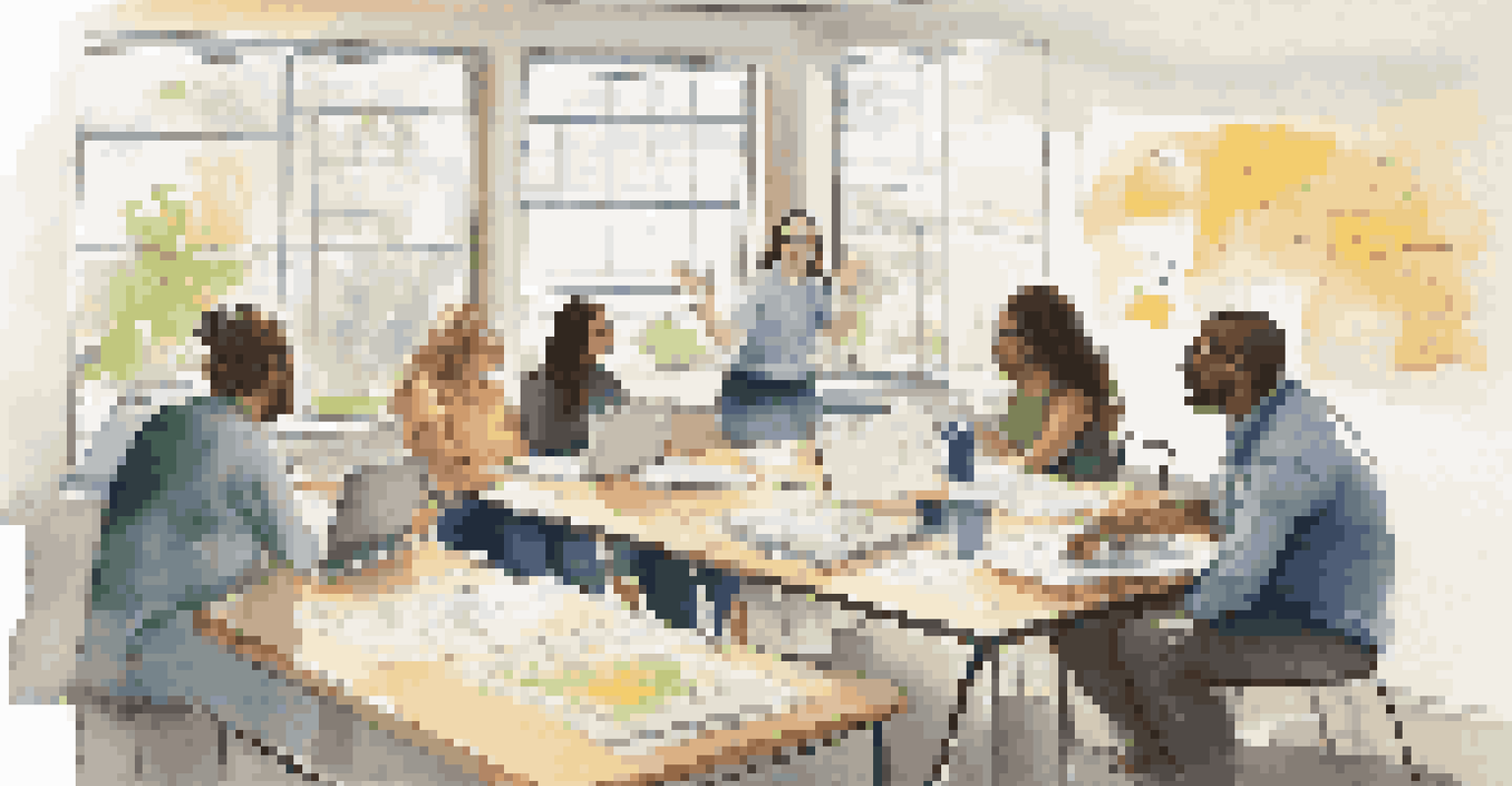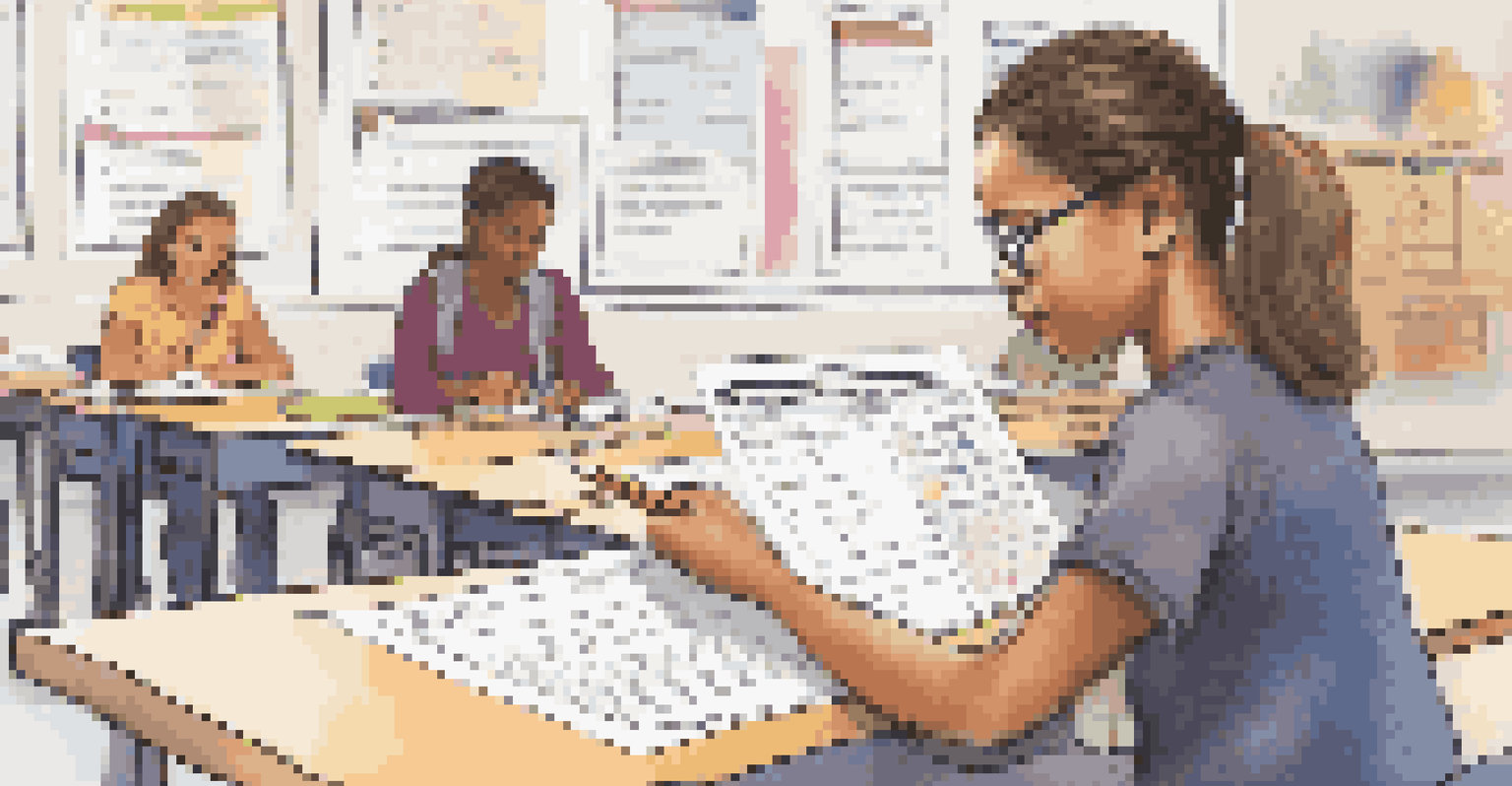Incorporating Feedback Loops in Teacher Professional Learning

Understanding Feedback Loops in Education
Feedback loops are systems that allow information to flow back to the source, helping individuals refine their skills and practices. In education, they play a crucial role in supporting teacher professional growth. By providing regular, constructive feedback, teachers can adjust their strategies and enhance student learning outcomes.
Feedback is the breakfast of champions.
Think of feedback loops like a cycle of improvement—just as a gardener prunes plants to help them flourish, educators can use feedback to nurture their teaching methods. This continuous process fosters a culture of collaboration, where teachers feel safe to share their experiences and learn from one another. Ultimately, effective feedback loops can lead to a more dynamic and responsive teaching environment.
Moreover, incorporating feedback loops encourages a growth mindset among educators. When teachers perceive feedback as a tool for development rather than criticism, they become more open to trying new approaches and refining their practices. This openness not only benefits their professional learning but also positively impacts the students they teach.
The Role of Peer Feedback in Professional Learning
Peer feedback is one of the most effective ways to enhance teacher development. When teachers work collaboratively, they can share insights and observations that provide different perspectives on teaching practices. This exchange fosters a supportive community where educators feel valued and empowered to improve.

For example, during peer observations, teachers can observe each other's classes and provide feedback based on their experiences. This not only helps the observed teacher reflect on their methods but also allows the observer to learn new strategies to implement in their own classrooms. Such reciprocal relationships create a rich learning environment where everyone benefits.
Feedback Loops Foster Growth
Feedback loops provide crucial support for teacher professional development, encouraging continuous improvement and collaboration.
Additionally, implementing structured peer feedback sessions can further enhance this process. By establishing clear guidelines and expectations, teachers can engage in meaningful discussions about their teaching practices, focusing on actionable feedback. This structured approach ensures that conversations remain constructive and centered on growth.
Feedback from Students: A Goldmine for Teachers
Student feedback is an invaluable resource for teachers seeking to improve their practices. By actively soliciting input from students about their learning experiences, educators can gain insights into what works and what doesn’t in their classrooms. This direct feedback can guide teachers in making necessary adjustments to their approaches.
The only real mistake is the one from which we learn nothing.
For instance, using anonymous surveys or feedback forms can help students express their thoughts candidly. When teachers understand their students' perspectives, they can tailor their instruction to better meet the needs of diverse learners. This not only fosters a more inclusive classroom environment but also enhances student engagement and motivation.
Moreover, incorporating student feedback into professional learning serves to empower learners, making them active participants in their education. When students see that their opinions are valued, they are more likely to invest in their learning. Ultimately, this collaborative approach can lead to higher student achievement and more fulfilled educators.
Creating a Culture of Continuous Improvement
Establishing a culture of continuous improvement within schools is essential for effective professional learning. This culture encourages teachers to view feedback as an opportunity rather than a threat. When educators embrace a mindset focused on growth, they are more likely to engage in reflective practices that benefit their teaching.
Building this culture involves creating safe spaces where teachers can share successes and challenges without fear of judgment. Professional learning communities (PLCs) can play a significant role in fostering this environment, as they promote collaboration and support among educators. In these settings, feedback becomes a natural part of the conversation.
Peer Feedback Enhances Learning
Collaborative peer feedback creates a supportive environment where teachers can share insights and refine their practices.
Additionally, school leaders can model a commitment to continuous improvement by actively seeking feedback themselves. When administrators are open to input from teachers, it sets a precedent that encourages everyone to participate in the feedback loop. This collective effort can lead to transformative changes in teaching and learning practices across the school.
Setting Clear Goals for Feedback Implementation
To effectively incorporate feedback loops into teacher professional learning, it’s vital to set clear goals. These goals should outline what teachers aim to achieve through feedback and how it will be integrated into their development. Establishing specific, measurable objectives helps keep everyone focused and accountable.
For instance, a goal might be to increase student engagement through the use of feedback mechanisms. By defining this goal, teachers can work collaboratively to identify strategies and assess their progress over time. This clear direction provides a roadmap for educators, allowing them to see the impact of their efforts on student learning.
Moreover, revisiting and revising these goals regularly is essential. As teachers gain new insights and experiences, their objectives may shift. By maintaining flexibility in goal-setting, educators can adapt their feedback loops to better meet the evolving needs of their students and themselves.
Utilizing Technology to Enhance Feedback Loops
In today’s digital age, technology can significantly enhance feedback loops in teacher professional learning. Online platforms and tools allow for seamless communication and collaboration among educators, making it easier to share feedback and resources. This accessibility can bridge the gap between teachers, especially in large or dispersed schools.
For example, using collaborative tools like Google Docs or online discussion forums can facilitate real-time feedback and discussions. Teachers can provide input on lesson plans or share classroom experiences without the constraints of time and location. This flexibility encourages ongoing dialogue and reflection, which is crucial for effective professional growth.
Student Input Drives Improvement
Actively seeking student feedback empowers learners and helps teachers tailor their instruction to better meet diverse needs.
Additionally, technology can streamline the process of gathering student feedback. Apps and online surveys make it easy for teachers to collect insights from their students quickly. This data can then be analyzed to inform teaching practices, creating a more responsive and adaptive learning environment.
Evaluating the Impact of Feedback Loops
To ensure that feedback loops are effective, it’s important to evaluate their impact on teacher professional learning. This evaluation process involves assessing how feedback is being utilized and the resultant changes in teaching practices. By analyzing this data, educators can identify areas of success and opportunities for improvement.
For instance, schools might conduct surveys or focus groups to gather input from teachers about their experiences with feedback loops. This information can reveal trends and patterns that inform future professional development initiatives. Such evaluations allow schools to continuously refine their approaches, ensuring that feedback remains a valuable component of teacher growth.

Moreover, sharing evaluation findings with the entire educational community can foster a sense of accountability and encourage further engagement. When teachers see the tangible benefits of feedback loops, they are more likely to commit to ongoing professional learning. Ultimately, this continuous cycle of evaluation and improvement leads to a more effective and dynamic teaching environment.